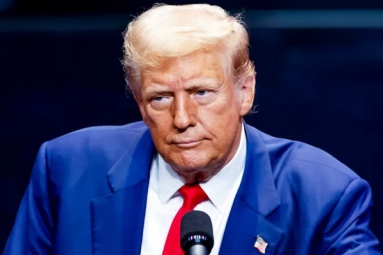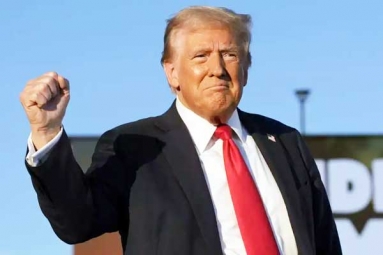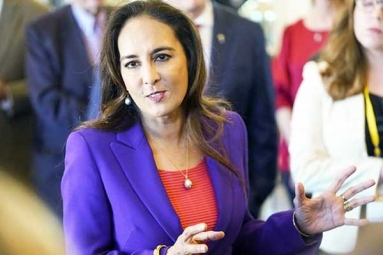
(Image source from: AP)
Donald Trump, recently elected to a second term as US president, has told Republicans in the House of Representatives that he may be running for an illegitimate third term. President-elect Trump, prone to making controversial statements, said: I don't think I will run again unless you (supporters) say otherwise. In his speech to elected House Republicans, Trump said: I will not run again unless you say he's good, we'll have to think of something else. His comments, made before meeting President Joe Biden at a hotel in Washington DC, sparked cheers from fans. It's no secret that the US Constitution contains provisions that prevent US presidents from running for a third term, but let's see if he can run again in 2020. The 22nd Amendment to the United States Constitution prohibits presidents from running for a third term. So if Donald Trump wants to run for a third term, he must first cancel the election. The proposed change would be difficult to implement because the president would need overwhelming support from Congress and state legislatures. It is unlikely that Trump will be able to do this.
According to an article on the American news site Vox, which interviewed a Stanford law professor who specializes in constitutional interpretation, there are questions about the possibility of such a constitutional change. This law professor said, "No, not at all, this will be his last run for president." The 22nd Amendment to the United States Constitution states that presidents may serve no more than two terms and no more. This applies to presidents serving both consecutive and non-consecutive terms. According to Section 1 of the 22nd Amendment to the United States Constitution, "No person shall be elected President more than once for a term of more than two years during which another person was elected President." However, this article does not apply to persons: who held the office of President when this Article was proposed and shall not prevent those who may have held that office at the time of the enactment of the Article from directing the Presidency or acting on behalf of the President's actions, it is “Prohibited him from holding the office of President or carrying out functions on behalf of the President.”
Article 2 states: "This article shall be effective only if it is ratified as an amendment to the Constitution by the legislatures of three-fourths of the several States within seven years from its presentation by the Congress to the United States." This Provision strictly limiting the term of office of the US president to a maximum of two terms was first enacted in 1951, when both Republicans and Democrats demanded such a provision. The reason for this is that Franklin D. The former US President Roosevelt was elected to the highest office four times. He died in 1945 during his fourth term as president. Although Roosevelt was the only president to be elected more than once, American lawmakers of both parties decided that there should be term limits, and so the 22nd Amendment came into force, limiting all presidential terms to a maximum of two terms.
George Washington, America's first president and founder, served the longest of two terms in office, so both parties agreed it was a legacy to carry on. There are checks and balances in place to ensure that constitutional amendments are not easily repealed. Prevent changes from being undone or revoked. However, it is not impossible.
To do this, legislation relating to such an order must be approved by a two-thirds majority (67%) of both houses of Congress. The House of Commons has 435 members, 290 of whom must vote for this repeal. Likewise, 67 members of the 100-member Senate must vote for it. That's not all. If the bill passes the House and Senate, it will be sent to all states. To pass, each state needs a three-quarters majority. Since there are 50 states in the US, 38 of them must pass it. I agree with that. It can be assumed that it will hardly be possible for Donald Trump to overcome all three hurdles.



















